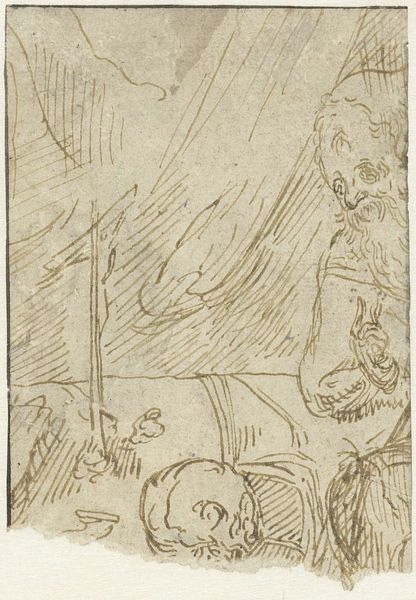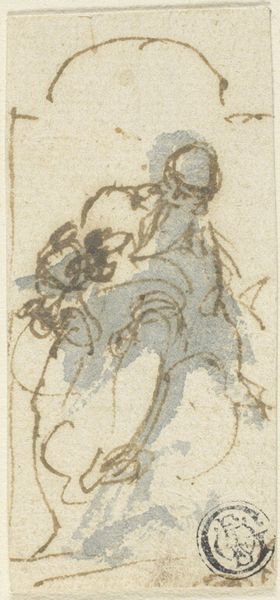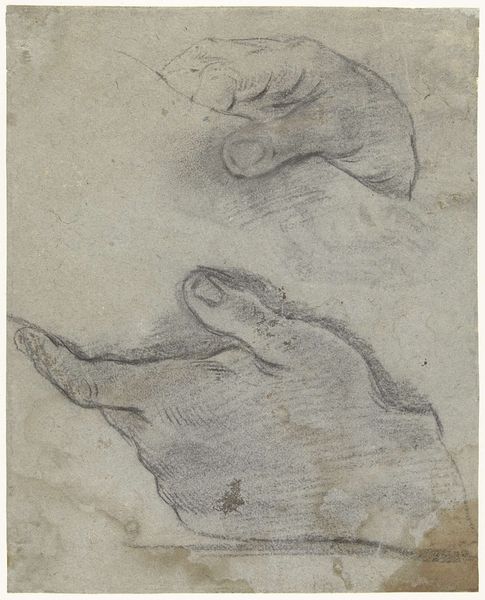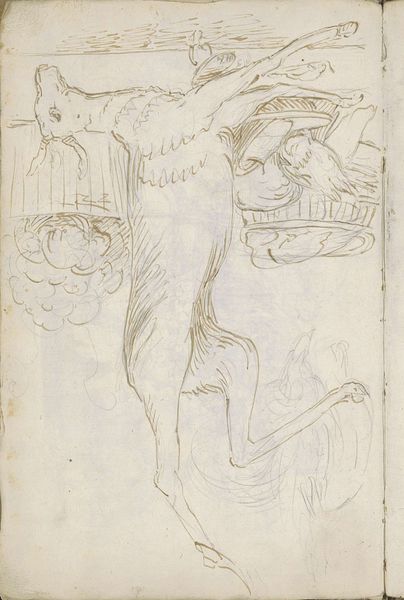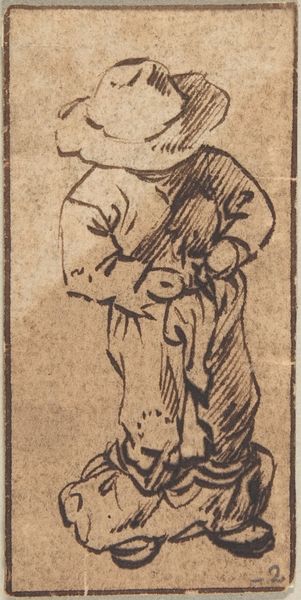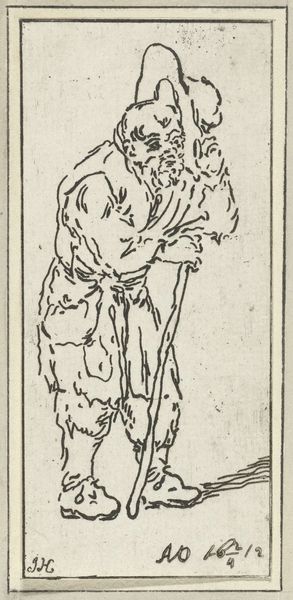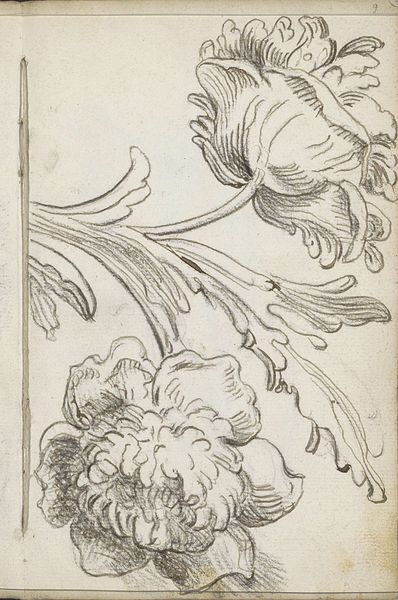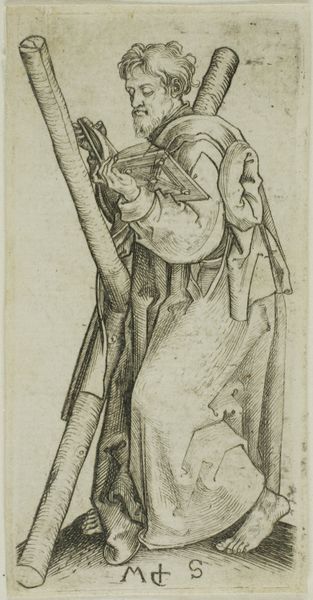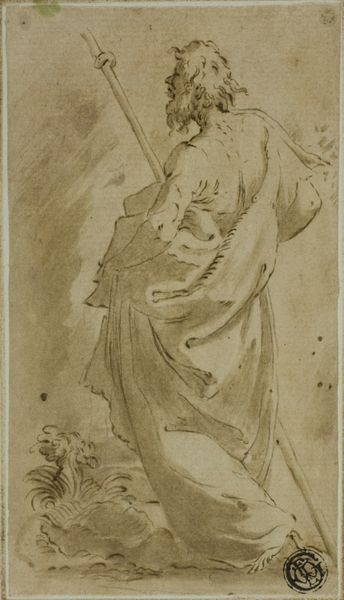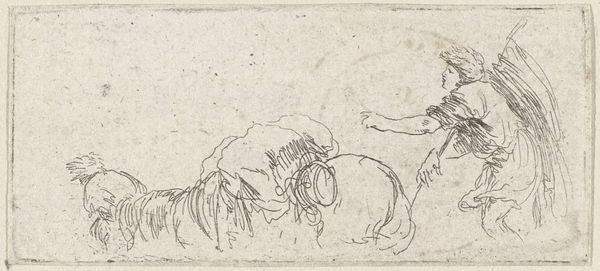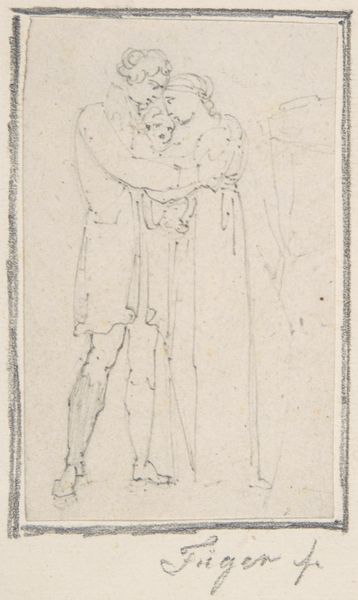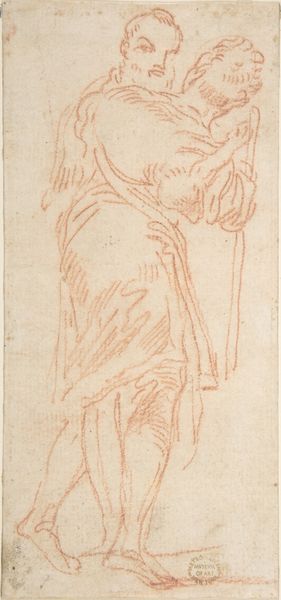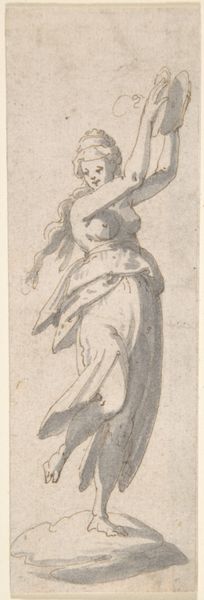
drawing, paper, ink
#
portrait
#
drawing
#
pencil sketch
#
figuration
#
paper
#
11_renaissance
#
ink
Dimensions: height 103 mm, width 38 mm
Copyright: Rijks Museum: Open Domain
Editor: We’re looking at "Kneeling Male Saint," a drawing in ink on paper by Annibale Carracci, created sometime between 1570 and 1609. It's currently held at the Rijksmuseum. What strikes me most is the raw emotion captured in just a few lines. What do you see when you look at this work? Curator: The linework immediately arrests the eye. Note the contrast between the agitated, almost frantic, scribbles around the head and torso and the relatively calmer contours of the figure's robe. This textural disparity creates a visual tension that echoes the subject's internal state. Consider also the figure's positioning within the frame: the cropped composition focuses our attention on the anguished form. Editor: So, the expressiveness comes mainly from the *way* it’s drawn rather than the specific narrative being depicted? Curator: Precisely. The narrative is secondary to the visual experience. Observe how the artist uses the varying weight and density of the ink lines to suggest depth and volume, especially in the drapery. Is it possible to decode these marks as purely abstract forms devoid of representative function? The figure’s posture – the bent knee, the clasped hands – serves primarily as an armature for this exploration of line and form. Editor: That's interesting, I hadn't thought about it that way, seeing the pose as a structure. I was so focused on the emotion it conveys. Curator: Indeed, this reading allows for a deeper appreciation of Carracci’s technical skill and his understanding of visual dynamics. What further details are evident through sustained inspection? Editor: I see what you mean now. Thanks! This was a very useful deep dive into an artform different to the typical masterpieces, revealing a focus on method rather than subject, and the impact on a piece's significance.
Comments
No comments
Be the first to comment and join the conversation on the ultimate creative platform.
